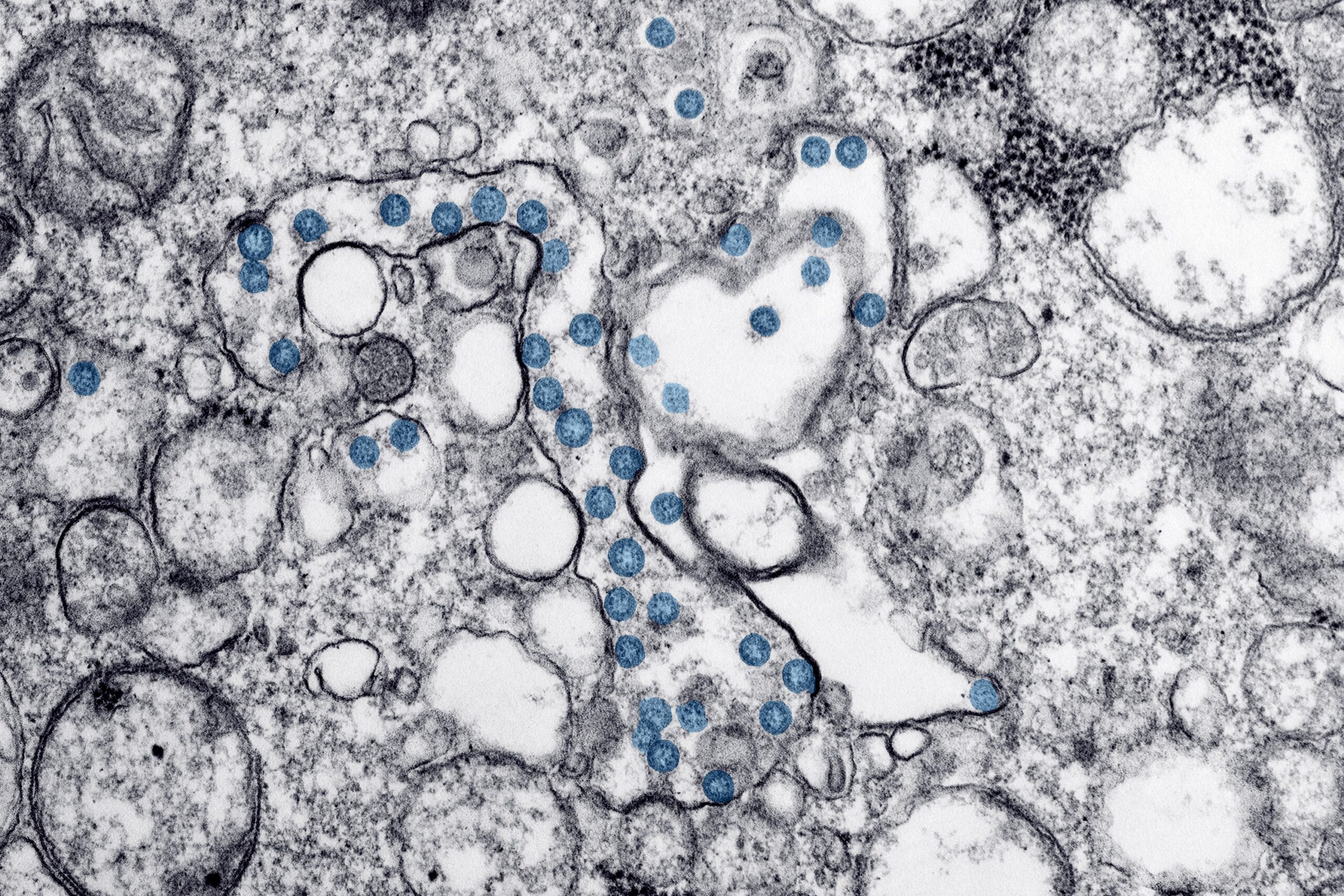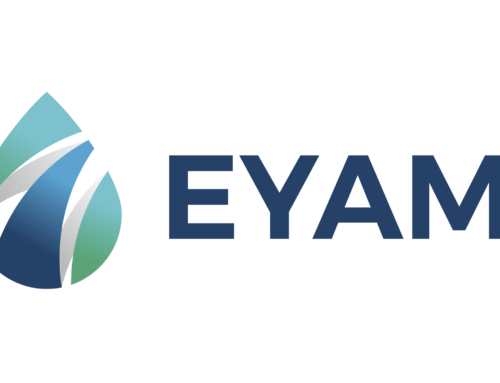New Applications for Eyam’s Vaccine Platforms
February 28, 2022
By Ryan M. Thomas
We’re only two months into the year and it looks like these unprecedented times are going to continue.
In the past, we’ve commented about how pandemics have historically ushered in great geopolitical change; it appears that we’re beginning to see that change occur.
While market volatility returned in January, February proved to be even more volatile with the threat and finally execution of President Vladimir Putin’s invasion of Ukraine.
After the Omicron wave began to recede this month, governments around the world began to relax COVID restrictions and push for a return to normal. While much has been said in the media about how the Omicron variant was less severe, deaths remained stubbornly high throughout the Omicron wave. And this, despite the availability of vaccines and the high number of previous infections.
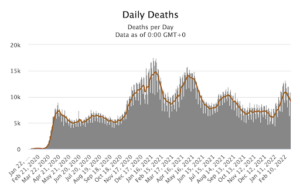
As I wrote about last month, evidence continues to emerge of the existence of animal reservoirs which will provide opportunities for the virus to mutate, potentially becoming more contagious, virulent, and have the ability to avoid immune system defenses. It’s likely that we will have a relatively quiet next few months before the next variant of concern emerges and brings new changes with it.
Influenza:
One of the positive outcomes of the pandemic has been the increased attention and conversation about self-health and well-being. Although the spotlight has been on a COVID-19 vaccine, behind the scenes there’s emerged an increased need for the prevention and treatment of influenza and cancer.
Although the prevalence of influenza decreased during the first year of the pandemic, these low rates have signalled to researchers that flu seasons in the future will likely be more voluminous and deadly. In an average year, the World Health Organization estimates that the flu takes 290,000 and 650,000 lives, but these rates are expected to rise.

Eyam’s research team anticipates that the desire to return to normal life after nearly two years of social distancing, masks, and other precautions will cause a much more harmful flu season than we’ve experienced in recent years. Now more than ever, there is a need for a universal influenza vaccine solution.
For these reasons, Eyam is planning to launch preclinical studies into the design and development of a pan-influenza vaccine in 2022.
What is a pan-influenza or universal flu vaccine?
First, it must be effective – at least 75% effective in preventing infection. Next, it must protect against different influenza variants and viruses. Then, it must have durability – at least for 1 year. Finally, it must be safe for all age groups.
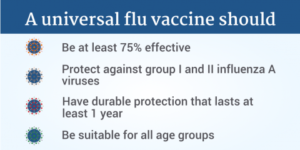
At present, we have seasonal flu vaccines which provide protection only to the strains that are projected to be the most dominant for the year, which leads to vaccines with lower efficacy, between 10 – 60%. Occasionally, novel flu viruses emerge for which the seasonal flu vaccine provides little to no protection.
Cancers:
Much like influenza outbreaks, the government equally monitors the proliferation of cancer among Canadians through the Canadian Cancer Statistics and the Canadian Cancer Data Tool.
Currently, cancer is the leading cause of death in the country, followed by cardiovascular and respiratory diseases. The latest statistics estimate an alarming percentage of Canadian women (43%) and Canadian men (45%), are likely to develop cancer during their lifetime. While these numbers are certainly high, the number of new cancer cases is expected to rise by 40% between 2015 and 2030.
Given the shifting demographics in the West, the aging population also equates to increased risks of acquiring cancer. Cancer control is at the forefront of government programs and private sectors’ work, with targets aimed at reducing cancer incidence and mortality through innovative treatments—which is being conducted under Eyam’s Chief Scientific Officer, Dr. Wilf Jefferies.

Graph 3: Cancer as the Highest Cause of Death in Canada (Latest Data -2019)
Source: Cancer Canadian Statistics 2021 Report
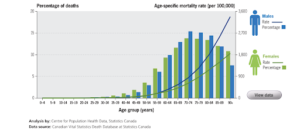
Graph 4: Percentage of Cancer Deaths and Age Spread Mortality Rates for All Cancers, by Age Group and Sex, in Canada (2017-2019 Data)
Source: Cancer Canadian Statistics 2021 Report
Immunotherapy allows us to enhance an individual’s innate and natural defense against cancer. As a subset of the larger method of biological therapy which utilizes substances emanating from living organisms as a way to combat cancer, immunotherapy enhances the ability of the immune system, as its standard operating procedure, to destroy abnormal cells. Cancer cells work in a way that may evade such destruction through genetic changes, or may have proteins on their surfaces that turn off immune cells.
In treating cancer, immunotherapy takes various forms such as T-cell transfer therapy, immune checkpoint inhibitors, monoclonal antibodies, immune system modulators, and treatment vaccines. Cancer treatment researchers are improving immunotherapy through predicting responses, finding solutions to resistance, and reducing side effects.
During these last few months, Eyam’s research team has been quietly working on a number of novel technologies for the treatment of cancers. In addition to the preclinical trials for influenza, Eyam also anticipates initiating preclinical work on cancer therapeutic technologies in 2022.
Eyam’s proprietary technology will target the use of immunotherapy through the Jennerator, Eyam’s algorithm, in advancing cancer treatments that are highly effective and personalized.
Next Generation Technologies:
Eyam’s mission is to advance the development of next-generation vaccines that create universal coverage and protection for all. Our next generation vaccine technologies, self-amplifying mRNA, viral detectors, immunomodulatory therapy, and DNA viruses as vaccine vectors, will contribute to a Golden Age of new vaccines and therapeutics. Much work is yet to be done, but Eyam’s research and development continues to open new opportunities for the future.
The gold standard will always be prevention, but aiming to champion both prevention and therapeutics is a bold path forward for Eyam.
With the development of these novel technologies, and their validation in the lab, Eyam Vaccines and Immunotherapeutics will be at the forefront of achieving this goal.
Eyam is also studying and developing applications for mRNA vaccines to be used for several other infectious diseases as well as central nervous system degenerative diseases, various types of cancer, and veterinary infectious diseases.
Eyam is excited to announce this commitment to pioneer research and testing on influenza and cancer.
New Applications for Eyam’s Vaccine Platforms
February 28, 2022
By Ryan M. Thomas
We’re only two months into the year and it looks like these unprecedented times are going to continue.
In the past, we’ve commented about how pandemics have historically ushered in great geopolitical change; it appears that we’re beginning to see that change occur.
While market volatility returned in January, February proved to be even more volatile with the threat and finally execution of President Vladimir Putin’s invasion of Ukraine.
After the Omicron wave began to recede this month, governments around the world began to relax COVID restrictions and push for a return to normal. While much has been said in the media about how the Omicron variant was less severe, deaths remained stubbornly high throughout the Omicron wave. And this, despite the availability of vaccines and the high number of previous infections.

As I wrote about last month, evidence continues to emerge of the existence of animal reservoirs which will provide opportunities for the virus to mutate, potentially becoming more contagious, virulent, and have the ability to avoid immune system defenses. It’s likely that we will have a relatively quiet next few months before the next variant of concern emerges and brings new changes with it.
Influenza:
One of the positive outcomes of the pandemic has been the increased attention and conversation about self-health and well-being. Although the spotlight has been on a COVID-19 vaccine, behind the scenes there’s emerged an increased need for the prevention and treatment of influenza and cancer.
Although the prevalence of influenza decreased during the first year of the pandemic, these low rates have signalled to researchers that flu seasons in the future will likely be more voluminous and deadly. In an average year, the World Health Organization estimates that the flu takes 290,000 and 650,000 lives, but these rates are expected to rise.

Eyam’s research team anticipates that the desire to return to normal life after nearly two years of social distancing, masks, and other precautions will cause a much more harmful flu season than we’ve experienced in recent years. Now more than ever, there is a need for a universal influenza vaccine solution.
For these reasons, Eyam is planning to launch preclinical studies into the design and development of a pan-influenza vaccine in 2022.
What is a pan-influenza or universal flu vaccine?
First, it must be effective – at least 75% effective in preventing infection. Next, it must protect against different influenza variants and viruses. Then, it must have durability – at least for 1 year. Finally, it must be safe for all age groups.

At present, we have seasonal flu vaccines which provide protection only to the strains that are projected to be the most dominant for the year, which leads to vaccines with lower efficacy, between 10 – 60%. Occasionally, novel flu viruses emerge for which the seasonal flu vaccine provides little to no protection.
Cancers:
Much like influenza outbreaks, the government equally monitors the proliferation of cancer among Canadians through the Canadian Cancer Statistics and the Canadian Cancer Data Tool.
Currently, cancer is the leading cause of death in the country, followed by cardiovascular and respiratory diseases. The latest statistics estimate an alarming percentage of Canadian women (43%) and Canadian men (45%), are likely to develop cancer during their lifetime. While these numbers are certainly high, the number of new cancer cases is expected to rise by 40% between 2015 and 2030.
Given the shifting demographics in the West, the aging population also equates to increased risks of acquiring cancer. Cancer control is at the forefront of government programs and private sectors’ work, with targets aimed at reducing cancer incidence and mortality through innovative treatments—which is being conducted under Eyam’s Chief Scientific Officer, Dr. Wilf Jefferies.

Graph 3: Cancer as the Highest Cause of Death in Canada (Latest Data -2019)
Source: Cancer Canadian Statistics 2021 Report

Graph 4: Percentage of Cancer Deaths and Age Spread Mortality Rates for All Cancers, by Age Group and Sex, in Canada (2017-2019 Data)
Source: Cancer Canadian Statistics 2021 Report
Immunotherapy allows us to enhance an individual’s innate and natural defense against cancer. As a subset of the larger method of biological therapy which utilizes substances emanating from living organisms as a way to combat cancer, immunotherapy enhances the ability of the immune system, as its standard operating procedure, to destroy abnormal cells. Cancer cells work in a way that may evade such destruction through genetic changes, or may have proteins on their surfaces that turn off immune cells.
In treating cancer, immunotherapy takes various forms such as T-cell transfer therapy, immune checkpoint inhibitors, monoclonal antibodies, immune system modulators, and treatment vaccines. Cancer treatment researchers are improving immunotherapy through predicting responses, finding solutions to resistance, and reducing side effects.
During these last few months, Eyam’s research team has been quietly working on a number of novel technologies for the treatment of cancers. In addition to the preclinical trials for influenza, Eyam also anticipates initiating preclinical work on cancer therapeutic technologies in 2022.
Eyam’s proprietary technology will target the use of immunotherapy through the Jennerator, Eyam’s algorithm, in advancing cancer treatments that are highly effective and personalized.
Next Generation Technologies:
Eyam’s mission is to advance the development of next-generation vaccines that create universal coverage and protection for all. Our next generation vaccine technologies, self-amplifying mRNA, viral detectors, immunomodulatory therapy, and DNA viruses as vaccine vectors, will contribute to a Golden Age of new vaccines and therapeutics. Much work is yet to be done, but Eyam’s research and development continues to open new opportunities for the future.
The gold standard will always be prevention, but aiming to champion both prevention and therapeutics is a bold path forward for Eyam.
With the development of these novel technologies, and their validation in the lab, Eyam Vaccines and Immunotherapeutics will be at the forefront of achieving this goal.
Eyam is also studying and developing applications for mRNA vaccines to be used for several other infectious diseases as well as central nervous system degenerative diseases, various types of cancer, and veterinary infectious diseases.
Eyam is excited to announce this commitment to pioneer research and testing on influenza and cancer.

